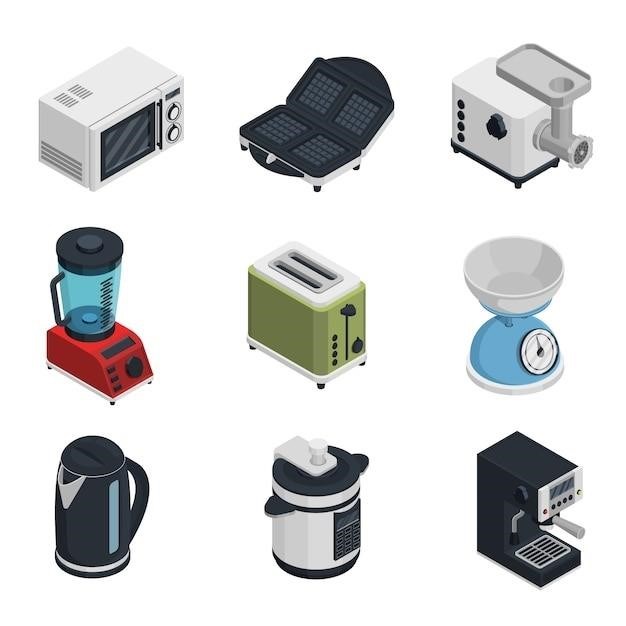Tie-Breaker Swivel Glider Recliner⁚ A Comprehensive Overview
The Tie-Breaker Swivel Glider Recliner is a luxurious and versatile seating option designed to elevate your comfort and style․ This recliner boasts a unique combination of features that make it perfect for relaxation, nursing, or simply enjoying a quiet moment․ Its smooth swivel and glide motion allows for effortless movement and personalized positioning, while the plush upholstery and supportive cushions offer unparalleled comfort․ With its sleek design and practical features, the Tie-Breaker Swivel Glider Recliner is a must-have addition to any living room or nursery․
Introduction
In a world where comfort and convenience reign supreme, the Tie-Breaker Manual Swivel Glider Recliner stands as a testament to the art of relaxation․ This innovative piece of furniture seamlessly blends style and functionality, offering a haven of tranquility for individuals seeking a sanctuary from the demands of daily life․ The Tie-Breaker Swivel Glider Recliner is more than just a chair; it’s an embodiment of comfort, versatility, and thoughtful design․ Its unique combination of features caters to a wide range of needs, making it an ideal choice for families, individuals, and those seeking a touch of luxury in their living spaces․
The Tie-Breaker Swivel Glider Recliner is designed to provide a truly immersive experience, enveloping users in a cocoon of comfort and support․ Its gentle rocking motion, combined with the smooth swivel and glide functionality, allows for effortless movement and personalized positioning․ Whether you’re seeking a cozy spot to curl up with a good book, a comfortable haven for nursing a baby, or a stylish addition to your living room decor, the Tie-Breaker Swivel Glider Recliner caters to every need․
This comprehensive overview delves into the key features, benefits, and design elements of the Tie-Breaker Manual Swivel Glider Recliner, highlighting its exceptional comfort, functionality, and aesthetic appeal․ From its sturdy construction to its plush upholstery and thoughtful design, the Tie-Breaker Swivel Glider Recliner offers a truly exceptional seating experience․
Key Features and Benefits
The Tie-Breaker Manual Swivel Glider Recliner is a testament to thoughtful design and functionality, boasting a range of features that elevate comfort and convenience to new heights․ Its key features, meticulously crafted to enhance the user experience, include⁚
- 360-Degree Swivel⁚ The Tie-Breaker Swivel Glider Recliner offers a smooth and effortless 360-degree swivel motion, allowing users to effortlessly rotate and face any direction․ This feature is particularly beneficial for engaging in conversations, watching television, or simply adjusting your position for optimal comfort․
- Gliding Motion⁚ The recliner’s gliding mechanism provides a gentle and controlled rocking motion, creating a soothing and calming effect․ This feature is ideal for relaxing, swaying back and forth, or gently rocking a baby to sleep․
- Reclining Feature⁚ The Tie-Breaker Swivel Glider Recliner features a manual reclining mechanism, allowing users to adjust the backrest to their desired angle for optimal comfort and support․ This feature enables you to find the perfect position for reading, watching television, or simply relaxing․
- Plush Upholstery⁚ The Tie-Breaker Swivel Glider Recliner is upholstered in soft and durable fabric, providing a luxurious and comfortable seating experience․ This feature ensures a gentle and inviting feel, making the recliner a perfect spot for cozying up․
- Hidden Storage Compartment⁚ The Tie-Breaker Swivel Glider Recliner is equipped with a cleverly designed hidden storage compartment, providing a discreet and convenient place to store remotes, books, or other personal items․ This feature keeps your living space tidy and organized while offering easy access to essentials․
The Tie-Breaker Manual Swivel Glider Recliner’s key features seamlessly combine to create a versatile and comfortable seating experience․ It’s more than just a chair; it’s a sanctuary designed to enhance your relaxation, comfort, and convenience․
Design and Construction
The Tie-Breaker Manual Swivel Glider Recliner is meticulously crafted with a focus on both aesthetic appeal and robust construction, ensuring longevity and lasting comfort․ Its design incorporates elements that seamlessly blend style and practicality, creating a visually captivating and durable piece of furniture․
The recliner’s frame is constructed with a corner-blocked design, providing exceptional strength and stability․ This sturdy frame is reinforced with metal components, further enhancing its durability and ensuring it can withstand the test of time․ The seat cushions are generously padded with high-resiliency foam wrapped in thick poly fiber, offering exceptional comfort and support․ These cushions are designed to maintain their shape and provide lasting comfort, even with regular use․
The Tie-Breaker Swivel Glider Recliner is upholstered in soft and durable polyester fabric, contributing to its overall comfort and aesthetic appeal․ The fabric’s smooth texture and pleasing color choices add a touch of sophistication to the recliner’s design․ The recliner features a barrel shape, which adds to its visual appeal and provides a sense of coziness and enveloping comfort․ The addition of posh bolster pillows with soft polyfill further enhances the recliner’s comfort and adds a touch of elegance to its design․
The Tie-Breaker Manual Swivel Glider Recliner is a harmonious blend of design and construction, resulting in a piece of furniture that is both visually pleasing and built to last․ Its robust construction, coupled with its comfortable and stylish design, makes it an ideal choice for those seeking a durable and aesthetically pleasing addition to their home․
Comfort and Functionality
The Tie-Breaker Manual Swivel Glider Recliner is meticulously designed to provide unparalleled comfort and functionality, catering to a wide range of needs and preferences․ Its unique combination of features creates a truly personalized and relaxing experience, making it ideal for various purposes, from leisurely relaxation to nursing and bonding with loved ones․
One of the key features that contributes to the Tie-Breaker’s exceptional comfort is its smooth swivel and glide motion․ This innovative design allows for effortless movement and personalized positioning, ensuring that you can find the perfect angle for ultimate relaxation․ The recliner’s gentle rocking motion adds a soothing element to the experience, creating a sense of tranquility and ease․ The soft and durable upholstery further enhances the comfort level, enveloping you in a warm embrace․
The Tie-Breaker Manual Swivel Glider Recliner also boasts a press-back reclining motion, allowing you to adjust the backrest to your desired position․ This feature provides additional support and comfort, enabling you to find the perfect posture for reading, watching television, or simply taking a nap․ The inclusion of posh bolster pillows with soft polyfill adds a touch of luxury and further enhances the overall comfort, providing additional support for your head and neck․
Beyond its comfort features, the Tie-Breaker Manual Swivel Glider Recliner is also designed with functionality in mind․ The recliner’s hidden storage compartment provides a convenient space for storing essentials such as books, magazines, or remote controls, keeping your living space tidy and organized․ This thoughtful design element adds to the recliner’s practicality and makes it a functional addition to any home․

Storage and Convenience
The Tie-Breaker Manual Swivel Glider Recliner is not only a haven of comfort but also a testament to thoughtful design, incorporating clever storage solutions that enhance convenience and functionality․ Beyond its plush seating and soothing motion, this recliner offers a practical element that adds to its appeal and practicality․

One of the standout features in this regard is the inclusion of a hidden storage compartment․ This discreet space, cleverly integrated into the recliner’s design, provides a convenient solution for keeping essentials close at hand while maintaining a clutter-free living environment․ Whether it’s books, magazines, remote controls, or other small items, the hidden storage compartment offers a secure and easily accessible space․
This thoughtful design element adds to the recliner’s overall practicality, making it a multi-functional piece of furniture․ It eliminates the need for additional storage solutions, keeping your living space tidy and organized․ The hidden storage compartment also ensures that your essentials are readily available, eliminating the need to search for them when you need them most․
The Tie-Breaker Manual Swivel Glider Recliner’s storage feature is a testament to its design philosophy, prioritizing both comfort and convenience․ It seamlessly blends functionality with aesthetics, offering a practical solution without compromising the recliner’s stylish appeal․ This blend of practicality and design makes the Tie-Breaker a truly versatile and desirable piece of furniture․
User Reviews and Testimonials
The Tie-Breaker Manual Swivel Glider Recliner has garnered praise from users who have experienced its comfort, functionality, and stylish design․ Online reviews and testimonials consistently highlight the recliner’s ability to provide a soothing and relaxing experience, with many users describing it as a haven of comfort․ The smooth swivel and glide motion, coupled with the plush upholstery and supportive cushions, are frequently cited as key contributors to the recliner’s appeal․
Users appreciate the recliner’s versatility, noting its suitability for both relaxation and nursing․ The swivel and glide motion make it easy to adjust the recliner to a comfortable position for reading, watching TV, or simply unwinding․ Its gentle rocking motion is also a popular feature, providing a soothing and calming effect․ Parents have found the recliner particularly helpful for feeding and bonding with their babies, with its comfortable seating and smooth motion providing a safe and secure environment for both parent and child․
The Tie-Breaker Manual Swivel Glider Recliner’s hidden storage compartment has also received positive feedback․ Users appreciate the convenience of having a discreet space to store essentials, keeping their living space tidy and organized․ The recliner’s overall design, combining comfort, functionality, and style, has earned it a reputation as a must-have piece of furniture for any living room or nursery․
Overall, user reviews and testimonials paint a positive picture of the Tie-Breaker Manual Swivel Glider Recliner․ Its combination of comfort, versatility, and practical features has made it a popular choice among users who seek a truly relaxing and functional seating option․
Where to Buy and Pricing
The Tie-Breaker Manual Swivel Glider Recliner is widely available for purchase through various online retailers and furniture stores․ Major online marketplaces like Amazon and Wayfair offer a convenient platform to browse and compare prices from different sellers․ Furniture specialty stores like Ashley Furniture HomeStore and Rooms To Go also carry the Tie-Breaker recliner, providing an opportunity to experience the chair in person before making a purchase․
The pricing for the Tie-Breaker Manual Swivel Glider Recliner can vary depending on the retailer, color, and any additional features included․ Generally, the recliner falls within a price range of $500 to $800, making it a mid-range option in the market․ Some retailers may offer discounts or promotions, particularly during seasonal sales events, which can make the recliner more affordable․ It’s always advisable to compare prices from multiple retailers to find the best deal․
In addition to the purchase price, it’s essential to consider the cost of delivery and assembly․ Some retailers offer free delivery within certain areas, while others charge a fee based on distance․ Assembly may be handled by the retailer for an additional fee, or customers can choose to assemble the recliner themselves․ It’s crucial to factor in these additional costs when budgeting for the Tie-Breaker Manual Swivel Glider Recliner․
When purchasing a Tie-Breaker Manual Swivel Glider Recliner, it’s important to select a reputable retailer with a positive track record and customer service․ Read customer reviews and compare pricing from different sellers to ensure you’re getting the best value for your money․ With careful research and planning, finding the right Tie-Breaker Manual Swivel Glider Recliner at the best price is achievable․
The Tie-Breaker Manual Swivel Glider Recliner offers a compelling blend of comfort, functionality, and style, making it a worthwhile investment for those seeking a versatile seating option․ Its unique combination of features, including a smooth swivel and glide motion, plush upholstery, supportive cushions, and cleverly designed storage, caters to a wide range of needs and preferences․ Whether you’re looking to unwind after a long day, nurse a baby, or simply enjoy a quiet moment of relaxation, the Tie-Breaker recliner provides a haven of comfort and tranquility․
The recliner’s durability and quality construction ensure that it will provide years of enjoyment․ Its sleek design seamlessly complements a variety of décor styles, making it a versatile addition to any living room or nursery․ While the Tie-Breaker recliner may be slightly more expensive than other reclining options, its exceptional comfort, functionality, and stylish aesthetics justify the investment․ For those seeking a truly luxurious and versatile seating experience, the Tie-Breaker Manual Swivel Glider Recliner is a worthy choice․
In conclusion, the Tie-Breaker Manual Swivel Glider Recliner offers a compelling combination of comfort, functionality, and style․ Its unique features, durable construction, and versatility make it a worthwhile investment for those seeking a premium seating option․ With careful research and consideration, the Tie-Breaker recliner can be a valuable addition to any home, providing a haven of comfort and tranquility for years to come․



























